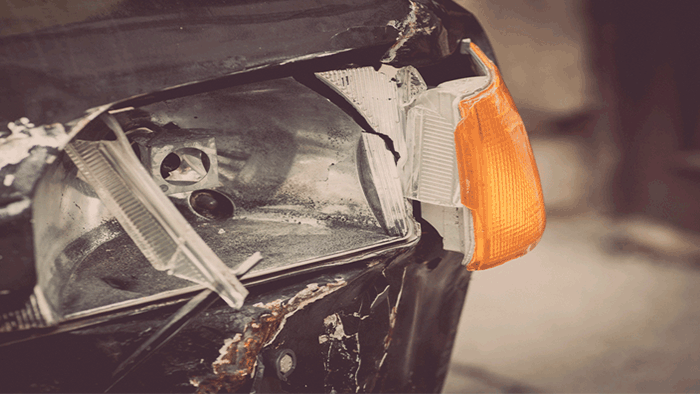Picture the scene. You're driving down a country road at night. There's a lot of traffic. You approach a side road on the right that you want to turn down.
A bump in the night
As you wait for a gap in the oncoming traffic so you can cross, a small queue builds up behind you.
Finally, a gap appears and you're turning into the junction when – bang! A motorbike smashes into the back of you. Its rider and passenger go flying over your car.
As the police begin to investigate, two stories emerge.
You tell them that the motorbike didn't have its lights on. And the motorcyclist claims that you weren't indicating to turn.
The police want to know who is lying and who is telling the truth.
This is an example of a real road traffic accident. And to find out the truth, the police came to us at the Materials and Engineering Research Institute.
By examining the broken lights from both cars in our lab, we were able to find out.
But how?
The hidden science of lightbulbs
Lightbulb filaments are made of tungsten. When the light is on, they reach heats of over 2000 degrees. And when tungsten is hot, it reacts very quickly when exposed to oxygen.
So when the glass around the filament is broken, the tungsten oxidises immediately, forming characteristic tungsten oxide on the surface.
When we study filaments from broken lightbulbs using our scanning electron microscope, we're looking for signs of tungsten oxide. If it's there, it means the filament was hot when the glass around it broke, so we can say that the light was definitely on when the glass envelope failed.
It can even work with flashing lights such as a car indicator, because when the indicator is turned on the filament often remains hot enough in between the flashes for the tungsten to oxidise when exposed to air.

The verdict
In this case, we could clearly see evidence of oxidation on the filaments from the car’s indicator lights. Globules of silica sticking to the filament showed that the indicator light was on when the glass around it was broken in the crash.
Conversely, there was no evidence of oxidation on the motorbike's broken headlights.
So we were able to confirm that the driver was indicating, and the motorcyclist did not have his lights on.
And that's how we work with the police to provide definitive proof in road traffic accident cases.